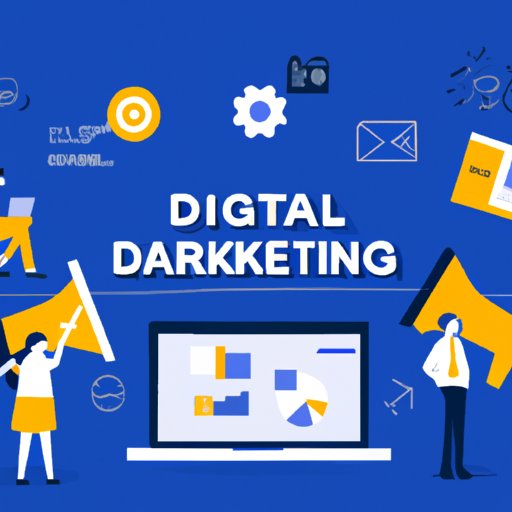Introduction
Digital marketing is the process of promoting products or services through online channels such as websites, social media platforms, search engines, and email. It’s an essential part of any business’s marketing strategy, as it allows you to reach a wider audience, generate leads, and ultimately increase sales. Developing a successful digital marketing strategy requires careful planning and consideration of several key elements.
Before embarking on creating a digital marketing strategy, it’s important to understand the benefits that come with having one. A well-crafted digital marketing strategy will help you to focus on your target audience, create content that resonates with them, and measure the success of your efforts. Additionally, a good strategy can help you stay ahead of your competitors and make informed decisions about future campaigns.
Identify Your Audience
The first step to developing a successful digital marketing strategy is to understand who your target audience is. Knowing who you are targeting will allow you to create content that resonates with them and tailor your messages to their interests and needs. To do this, you should conduct thorough research into your target demographic by looking at factors such as age, location, gender, interests, and occupation.
It’s also important to research the interests, needs, and wants of your target audience. This will help you to create content that is tailored to their specific needs and wants, rather than generic content that could be applicable to anyone. You should also consider what type of content they are most likely to engage with, such as blog posts, videos, podcasts, or infographics.
Set Goals
Once you have identified your target audience, it’s time to set some goals. Setting goals will help you to focus your efforts and measure the success of your digital marketing strategy. When setting goals, it’s important to be specific and measurable. For example, instead of saying “Increase website traffic”, you could say “Increase website traffic by 10% within 3 months”.
You should also take into account the resources available to you when setting goals. If you don’t have the resources to achieve a certain goal, then it’s best to adjust it accordingly. Additionally, you should set both short-term and long-term goals so that you can measure your progress over time.
Research Your Competitors
When developing a digital marketing strategy, it’s important to keep an eye on your competitors. By researching your competitors, you can gain valuable insights into the market and identify areas where you can differentiate yourself. You should look at their strategies, content, and campaigns to get an idea of what works and what doesn’t.
You should also use competitor research to inform your own strategy. For example, if you see that your competitors are having success with a certain type of content, you could consider implementing it in your own strategy. Additionally, you can use competitor research to identify areas where you can stand out from the crowd.
Choose Your Channels
Once you have researched your competitors and identified your target audience, it’s time to choose which channels you will use for your digital marketing strategy. The channels you choose will depend on your target audience, budget, and goals. Popular channels include social media platforms, websites, email, search engines, and video streaming sites.
When choosing channels, it’s important to consider the pros and cons of each one. For example, social media is great for reaching a wide audience, but it can be difficult to measure the success of campaigns. Additionally, you should consider the amount of time and resources required to manage each channel effectively.
Develop Content
Content creation is an integral part of any digital marketing strategy. Content is what will engage your audience and drive conversions, so it’s important to create content that resonates with them. When creating content, you should consider factors such as the type of content, frequency of posts, and format.
It’s also important to ensure that your content meets your goals. For example, if your goal is to increase website traffic, then you should create content that encourages people to visit your website. Additionally, you should make sure that your content is optimized for search engines, as this will help to boost your visibility.
Monitor Results
Once you have created your content and implemented your digital marketing strategy, it’s important to track and analyze the results. This will allow you to assess the success of your efforts and make informed decisions about future campaigns. You should track metrics such as website traffic, engagement, conversions, and sales.
You should also use the data to inform future strategies. For example, if you notice that certain types of content are performing better than others, then you should focus more of your efforts on creating that type of content. Additionally, you should use the data to identify areas where you can improve your strategy.
Conclusion
Developing a successful digital marketing strategy requires careful planning and consideration of several key elements. This includes understanding your target audience, setting goals, researching competitors, choosing channels, developing content, and monitoring results. By following these steps, you can create a digital marketing strategy that will help you reach your goals and increase your sales.
(Note: Is this article not meeting your expectations? Do you have knowledge or insights to share? Unlock new opportunities and expand your reach by joining our authors team. Click Registration to join us and share your expertise with our readers.)
